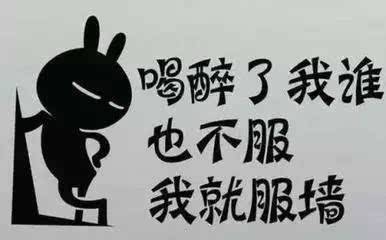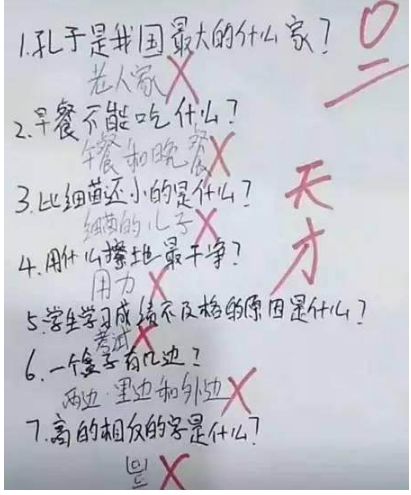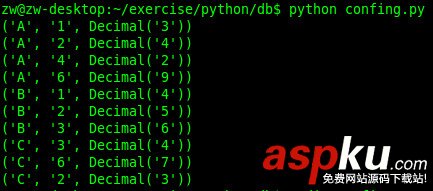开始之前当然要导入模块啦:
>>> import pymongo
下一步,必须本地mongodb服务器的安装和启动已经完成,才能继续下去。
建立于MongoClient 的连接:
client = MongoClient('localhost', 27017)# 或者client = MongoClient('mongodb://localhost:27017/') 得到数据库:
>>> db = client.test_database# 或者>>> db = client['test-database']
得到一个数据集合:
collection = db.test_collection# 或者collection = db['test-collection']
MongoDB中的数据使用的是类似Json风格的文档:
>>> import datetime>>> post = {"author": "Mike",... "text": "My first blog post!",... "tags": ["mongodb", "python", "pymongo"],... "date": datetime.datetime.utcnow()} 插入一个文档:
>>> posts = db.posts>>> post_id = posts.insert_one(post).inserted_id>>> post_idObjectId('...') 找一条数据:
>>> posts.find_one(){u'date': datetime.datetime(...), u'text': u'My first blog post!', u'_id': ObjectId('...'), u'author': u'Mike', u'tags': [u'mongodb', u'python', u'pymongo']}>>> posts.find_one({"author": "Mike"}){u'date': datetime.datetime(...), u'text': u'My first blog post!', u'_id': ObjectId('...'), u'author': u'Mike', u'tags': [u'mongodb', u'python', u'pymongo']}>>> posts.find_one({"author": "Eliot"})>>> 通过ObjectId来查找:
>>> post_idObjectId(...)>>> posts.find_one({"_id": post_id}){u'date': datetime.datetime(...), u'text': u'My first blog post!', u'_id': ObjectId('...'), u'author': u'Mike', u'tags': [u'mongodb', u'python', u'pymongo']} 不要转化ObjectId的类型为String:
>>> post_id_as_str = str(post_id)>>> posts.find_one({"_id": post_id_as_str}) # No result>>> 如果你有一个post_id字符串,怎么办呢?
from bson.objectid import ObjectId# The web framework gets post_id from the URL and passes it as a stringdef get(post_id): # Convert from string to ObjectId: document = client.db.collection.find_one({'_id': ObjectId(post_id)}) 多条插入:
>>> new_posts = [{"author": "Mike",... "text": "Another post!",... "tags": ["bulk", "insert"],... "date": datetime.datetime(2009, 11, 12, 11, 14)},... {"author": "Eliot",... "title": "MongoDB is fun",... "text": "and pretty easy too!",... "date": datetime.datetime(2009, 11, 10, 10, 45)}]>>> result = posts.insert_many(new_posts)>>> result.inserted_ids[ObjectId('...'), ObjectId('...')] 查找多条数据:
>>> for post in posts.find():... post...{u'date': datetime.datetime(...), u'text': u'My first blog post!', u'_id': ObjectId('...'), u'author': u'Mike', u'tags': [u'mongodb', u'python', u'pymongo']}{u'date': datetime.datetime(2009, 11, 12, 11, 14), u'text': u'Another post!', u'_id': ObjectId('...'), u'author': u'Mike', u'tags': [u'bulk', u'insert']}{u'date': datetime.datetime(2009, 11, 10, 10, 45), u'text': u'and pretty easy too!', u'_id': ObjectId('...'), u'author': u'Eliot', u'title': u'MongoDB is fun'} 当然也可以约束查找条件:
>>> for post in posts.find({"author": "Mike"}):... post...{u'date': datetime.datetime(...), u'text': u'My first blog post!', u'_id': ObjectId('...'), u'author': u'Mike', u'tags': [u'mongodb', u'python', u'pymongo']}{u'date': datetime.datetime(2009, 11, 12, 11, 14), u'text': u'Another post!', u'_id': ObjectId('...'), u'author': u'Mike', u'tags': [u'bulk', u'insert']} 获取集合的数据条数:
>>> posts.count()
或者说满足某种查找条件的数据条数:
>>> posts.find({"author": "Mike"}).count() 范围查找,比如说时间范围:
>>> d = datetime.datetime(2009, 11, 12, 12)>>> for post in posts.find({"date": {"$lt": d}}).sort("author"):... print post...{u'date': datetime.datetime(2009, 11, 10, 10, 45), u'text': u'and pretty easy too!', u'_id': ObjectId('...'), u'author': u'Eliot', u'title': u'MongoDB is fun'}{u'date': datetime.datetime(2009, 11, 12, 11, 14), u'text': u'Another post!', u'_id': ObjectId('...'), u'author': u'Mike', u'tags': [u'bulk', u'insert']} $lt是小于的意思。
如何建立索引呢?比如说下面这个查找:
>>> posts.find({"date": {"$lt": d}}).sort("author").explain()["cursor"]u'BasicCursor'>>> posts.find({"date": {"$lt": d}}).sort("author").explain()["nscanned"] 建立索引:
>>> from pymongo import ASCENDING, DESCENDING>>> posts.create_index([("date", DESCENDING), ("author", ASCENDING)])u'date_-1_author_1'>>> posts.find({"date": {"$lt": d}}).sort("author").explain()["cursor"]u'BtreeCursor date_-1_author_1'>>> posts.find({"date": {"$lt": d}}).sort("author").explain()["nscanned"] 连接聚集
>>> account = db.Account#或 >>> account = db["Account"]
查看全部聚集名称
>>> db.collection_names()
查看聚集的一条记录
>>> db.Account.find_one() >>> db.Account.find_one({"UserName":"keyword"})
查看聚集的字段
>>> db.Account.find_one({},{"UserName":1,"Email":1}){u'UserName': u'libing', u'_id': ObjectId('4ded95c3b7780a774a099b7c'), u'Email': u'libing@35.cn'} >>> db.Account.find_one({},{"UserName":1,"Email":1,"_id":0}){u'UserName': u'libing', u'Email': u'libing@35.cn'}
查看聚集的多条记录
>>> for item in db.Account.find(): item >>> for item in db.Account.find({"UserName":"libing"}): item["UserName"]
查看聚集的记录统计
>>> db.Account.find().count() >>> db.Account.find({"UserName":"keyword"}).count()
聚集查询结果排序
>>> db.Account.find().sort("UserName") #默认为升序>>> db.Account.find().sort("UserName",pymongo.ASCENDING) #升序>>> db.Account.find().sort("UserName",pymongo.DESCENDING) #降序
聚集查询结果多列排序
>>> db.Account.find().sort([("UserName",pymongo.ASCENDING),("Email",pymongo.DESCENDING)])
添加记录
>>> db.Account.insert({"AccountID":21,"UserName":"libing"})
修改记录
>>> db.Account.update({"UserName":"libing"},{"$set":{"Email":"libing@126.com","Password":"123"}})
删除记录
>>> db.Account.remove() -- 全部删除 >>> db.Test.remove({"UserName":"keyword"}) 


















